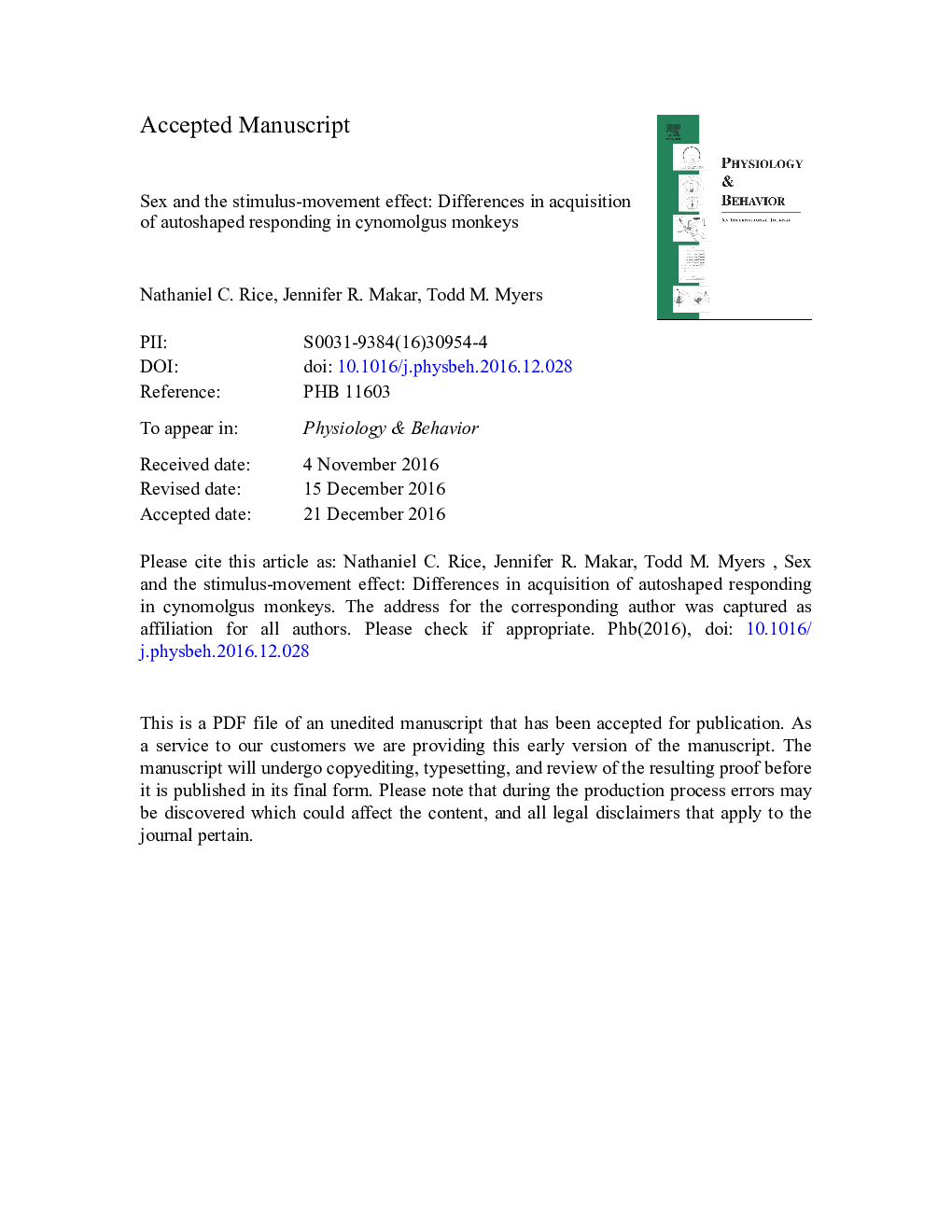| کد مقاله | کد نشریه | سال انتشار | مقاله انگلیسی | نسخه تمام متن |
|---|---|---|---|---|
| 5593821 | 1571148 | 2017 | 43 صفحه PDF | دانلود رایگان |
عنوان انگلیسی مقاله ISI
Sex and the stimulus-movement effect: Differences in acquisition of autoshaped responding in cynomolgus monkeys
دانلود مقاله + سفارش ترجمه
دانلود مقاله ISI انگلیسی
رایگان برای ایرانیان
کلمات کلیدی
موضوعات مرتبط
علوم زیستی و بیوفناوری
بیوشیمی، ژنتیک و زیست شناسی مولکولی
فیزیولوژی
پیش نمایش صفحه اول مقاله

چکیده انگلیسی
The stimulus-movement effect refers to the phenomenon in which stimulus discrimination or acquisition of a response is facilitated by moving stimuli as opposed to stationary stimuli. The effect has been found in monkeys, rats, and humans, but the experiments conducted did not provide adequate female representation to investigate potential sex differences. The current experiment analyzed acquisition of stimulus touching in a progressive series of classical conditioning procedures in cynomolgus monkeys (Macaca fascicularis) as a function of sex and stimulus movement. Classical conditioning tasks arrange two or more stimuli in relation to each other with different temporal and predictive relations. Autoshaping procedures overlay operant contingencies onto a classical-conditioning stimulus arrangement. In the present case, a neutral stimulus (a small gray square displayed on a touchscreen) functioned as the conditional stimulus and a food pellet functioned as the unconditional stimulus. Although touching is not required to produce food, with repeated stimulus pairings subjects eventually touch the stimulus. Across conditions of increasing stimulus correlation and temporal contiguity, male monkeys acquired the response faster with a moving stimulus. In contrast, females acquired the response faster with a stationary stimulus. These results demonstrate that the stimulus-movement effect may be differentially affected by sex and indicate that additional experiments with females are needed to determine how sex interacts with behavioral phenomena discovered and elaborated almost exclusively using males.
ناشر
Database: Elsevier - ScienceDirect (ساینس دایرکت)
Journal: Physiology & Behavior - Volume 171, 15 March 2017, Pages 40-49
Journal: Physiology & Behavior - Volume 171, 15 March 2017, Pages 40-49
نویسندگان
Nathaniel C. Rice, Jennifer R. Makar, Todd M. Myers,